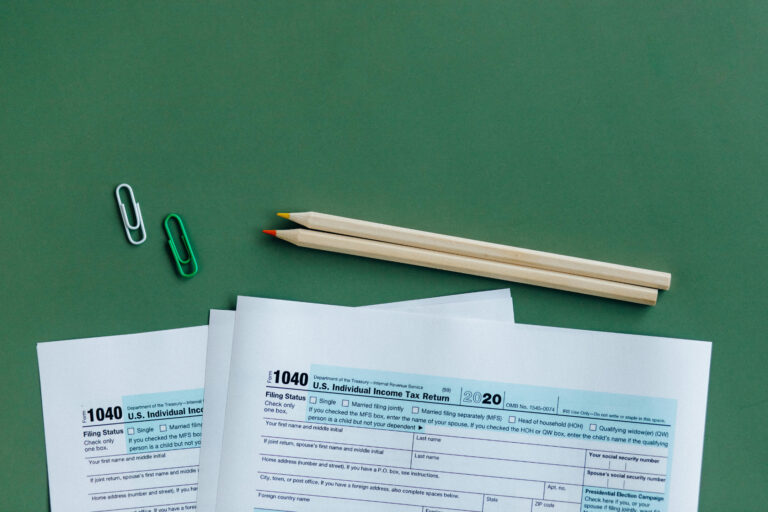The capitalization table, or cap table for short, is the table that summarizes all the ownership interests in the company. It tells you what each investor owns and you can also use it to calculate how much each investor’s ownership stake is worth. This article details how a cap table is used and what makes up a cap table.
1 What Is a Cap Table?
The capitalization table, or cap table for short, is a table that summarizes all the ownership interests in a company. It provides a listing of all the owners in the company and their holdings as well as potential equity that could be issued based on existing agreements. When the cap table is combined with valuation, you can calculate how much an individual investor or class of shareholder is worth.
Think of the cap table as your startup’s ownership snapshot—one of the first things a serious investor will want to see. Prospective investors use the cap table to identify existing owners and how much has been previously invested, using this info as one of the key starting points in determining how much to invest and at what valuation.
Since there can be many changes to a company’s equity ownership over time, it’s critical to track equity transactions to keep the cap table up to date. Besides new investment, issued and unissued stock options, new hires, investor agreements, and secondary sales also impact the cap table. One major oversight is failing to properly document agreements with investors or employees, which can make putting the cap table together more difficult due to lack of a paper trail and misunderstandings or disagreements over terms.
1.1 Why Cap Tables Matter
Existing investors and users such as executive management use the cap table to understand their ownership stake, track the dilution of the equity, evaluate the impact of future financing rounds, and assess the potential return on their investment. Founders and management also use the cap table to determine how much of a stock option pool should be set aside and how much in stock options should be provided to employees.
For prospective investors, an up-to-date cap table is a snapshot that provides several valuable pieces of information:
- Understanding company structure: The cap table shows the company’s history of fundraising and also provides a view of the current ownership split. The prospective investor also gets an idea of the stock option pool and can assess if this needs to be increased. They can also evaluate what convertible debt is outstanding and how these will impact total ownership if they are converted into equity.
- Assessing risk: Knowing who has previously invested and how much is owned by each party can help new investors assess risk. Investors with larger holdings may have more power or influence in the negotiation of the subsequent rounds, particularly on valuation in order to avoid dilution. Founders who still have significant stakes are also more likely to reflect investor confidence.
- Negotiating terms: Knowing what previous investors have invested, combined with a knowledge of current conditions, can provide valuable insight for negotiating terms of the current investment.
The cap table is one of the key documents that any new investor will ask for. A company that doesn’t have an up-to-date cap table or which has trouble providing one will be a red flag for many investors.
2 Components of the Cap Table
A quick scan of a cap table can reveal a great deal about the company’s ownership structure. A cap table will typically include the following information:
2.1 List of Investors and Owners
The cap table will list each individual owner in the company, from founders to employees to investors. The cap table will also include shares that have been set aside for potential issuance, such as from stock options, warrants, and convertible debt.
Knowing who all the investors are and keeping track of them is solid business practice. Investors may need to be contacted for certain matters, such as approving specific types of transactions and new investments. At the other extreme, if the company is sold or liquidated, then the owners may be entitled to a share of the proceeds, and you need to know who they are and how to get in touch with them.
Your business records should include the names of the investors, physical and e-mail addresses, phone numbers, and proper documents to support all equity transactions. The last thing you want as a successful founder ready to receive a new round of investment or sell the company is for an investor to come out of the woodwork claiming he is entitled to a share of your company based on a vague handshake agreement.
2.2 Class of Ownership or Ownership Type
The cap table identifies the class of ownership or ownership type of each investor. This is typically the class of stock, such as common stock or Series A Preferred, or form of investment that the investor has made, such as convertible debt or SAFE (simple agreement for future equity).
Some instruments—like options, warrants, convertible debt, and SAFEs—don’t turn into shares right away, but might in the future. These are considered potential equity and play a critical part when calculating dilution. This is discussed further under the Equity Dilution section below.
The number of shares owned is self-explanatory—each investor holds a certain number of shares.
For potentially issuable shares, the number of shares owned may not be known with certainty. For example, some employee stock options may be forfeited by an employee if he or she leaves the company before they vest. For convertible debt and SAFEs, the exact number of shares is often not known until the valuation of the next round is set. In these cases, assumptions about the forfeiture rate or valuation of the next round can be used to estimate the number of potential shares there are.
2.4 Percentage Ownership and Voting Ownership Percentage
The percentage ownership and voting ownership percentage are typically calculated based on the number of shares owned. Similar to the number of shares owned, this is self-explanatory.
There are certain instances when the percentage ownership and voting ownership percentage need to be adjusted. To keep things simple for this article, these will be addressed in a separate article.
2.5 Original Investment Amount
The original investment amount helps provide a history of the company’s fundraising activities. It is not always shown on the latest cap table, in which case it can be found on earlier cap tables from prior rounds.
Besides the fundraising history, the original investment amount can also be used to calculate the valuation of prior fundraising rounds and to compare against the current valuation.
The current share price and valuation are calculated from the overall post-money company valuation. Including the current share price and valuation for each investor shows how much each investor is worth, which is helpful for existing investors and management.
3 Equity Dilution
3.1 Dilution
Dilution refers to the reduction in ownership of existing shareholders when new investors invest. In the simplest example, assume that a sole founder owns 100 percent of his or her company. As soon as a new investor invests in the company, that founder’s ownership interest is diluted. The amount of dilution depends on how much is invested relative to how much the company is worth at the time of the investment.
The cap table calculates each shareholder’s ownership percentage after each new round. The example in section 5 illustrates dilution of founders’ shares across successive rounds of new investment.
3.2 Fully-Diluted Ownership
When people talk about ‘how much of the company you own,’ they usually mean on a fully-diluted basis—what your ownership would look like if every possible share was issued, including options, warrants, convertible notes, SAFEs, and unvested stock.
Why is equity ownership expressed on a fully-diluted basis? The reason is that everyone wants to know how much they own if all potential equity was outstanding. For example, someone may own 10% of the outstanding shares of the company now, but after all options, warrants, and convertible debt are exercised or converted, their ownership may drop to 7%—a significant 30% reduction when computing how much their stake is worth!

Still from “Captain America: Civil War” (2016, directed by Anthony Russo and Joe Russo).
In a new round of equity investment, new shares are issued and a new price per share is established. Remember that the difference between the post-money and pre-money valuation represents the amount of the new investment, and that the post-money valuation represents the estimate of how much the company is worth after the new investment.
The number of shares to be issued for a new investment round is calculated after valuation is settled, using the following steps:
- Determine the pre-money valuation (what the company is worth prior to the new investment).
- Determine how much capital the company needs to raise, and agree on the investment amount with the investors.
- The pre-money valuation + the investment amount = the post-money valuation.
- The ownership percentage for the new investment = investment amount / post-money valuation.
- The number of new shares to be allocated to the investment is calculated such that they will equal the ownership percentage calculated in step 4. Existing shareholders’ ownership is diluted proportionally.
The current price of all shares is set by the latest round, so the new investment divided by the number of new shares will provide you with the new price per share.
Multiplying the number of shares of any round by the current price will tell you how much they are worth. For example, if an investor invested $1,000,000 for 1,000,000 shares in an earlier round, they would have paid $1.00 per share. However, if the newest round values each share at a price of $3.00, then the earlier investor’s shares are now worth 1,000,000 x $3.00 = $3,000,000.For more on valuation, read my articles on capital structure and valuation here and here.
5 A Cap Table Example
To illustrate a cap table in action, let’s take an example of a company from founding through two rounds of investment. (For purposes of this example, we ignore potential equity like the stock option pool and convertible debt.)
5.1 Cap Table at Company Founding
Let’s assume that at founding, there are two co-founders and one key employee. The two co-founders decide that they should each get 45% of the company, and they give 10% of the company to the key employee. (Since the company was just founded, there is no current share valuation or share price.) The cap table at founding looks like this:

5.2 Cap Table After First Capital Raise
After three years, the company has made great progress and is ready to raise its first outside equity round of Series A Preferred Stock. If the company determines its pre-money valuation is $2,000,000 and that it needs to raise $1,000,000, then it will have a post-money valuation of $3,000,000. Here’s the cap table after the investment is made:

The new Series A investor must own 33.3% of the company, since they are contributing $1,000,000 out of the total $3,000,000 investment. To get to 33.3% ownership, they must hold 500,000 of the total shares after the round is finished. The price per share is calculated as the $1,000,000 new investment divided by the 500,000 new shares issued, for a price of $2.00 per share.
Note how the ownership percentages of the original co-founders and key employee have been diluted—a co-founder that previously owned 45.0% of the company now owns 30.0%, but at the current price per share of $2.00, their interest is now worth $900,000.
5.3 Cap Table After Second Capital Raise
After another two years, the company raises its Series B round. This time, the pre-money valuation has grown to $10,000,000, and the company seeks to raise a combined $5,000,000 from two venture capital funds. The cap table after the Series B investment would look like this:

The new Series B investors together own 33.3% of the company, the same as what the Series A investor originally owned after the Series A investment. After this new round, the Series A investor’s ownership interest has been diluted from 33.3% to 22.2%, but the value of the Series A stake has grown from $1,000,000 to $3,333,333 because the value of each individual share has gone up to $6.67.
Likewise, each original co-founders’ ownership has been further diluted from 30.0% to 20.0%, but each interest is now worth $3,000,000.
6 Final Words
A well-kept cap table is more than just a spreadsheet—it’s a sign that your company is organized, trustworthy, and investor-ready. It helps you plan for the future, set expectations, and avoid surprises.
Understanding how the cap table changes as you go through future financing rounds will help you understand how your ownership changes and responds to different valuations, helping you negotiate with investors more effectively. It will also give you the information to communicate and set realistic expectations about dilution when promising equity to employees and advisors, especially in the early days of the startup.
I’ve seen many founders want to avoid dilution, perhaps out of a fear of giving up too much value or control in the company. Hopefully seeing and understanding how the cap table and valuation work help explain why avoiding dilution is often unrealistic, but also how as valuation increases, it often helps raise the value of the founder’s holdings to offset the impact of any dilution.






